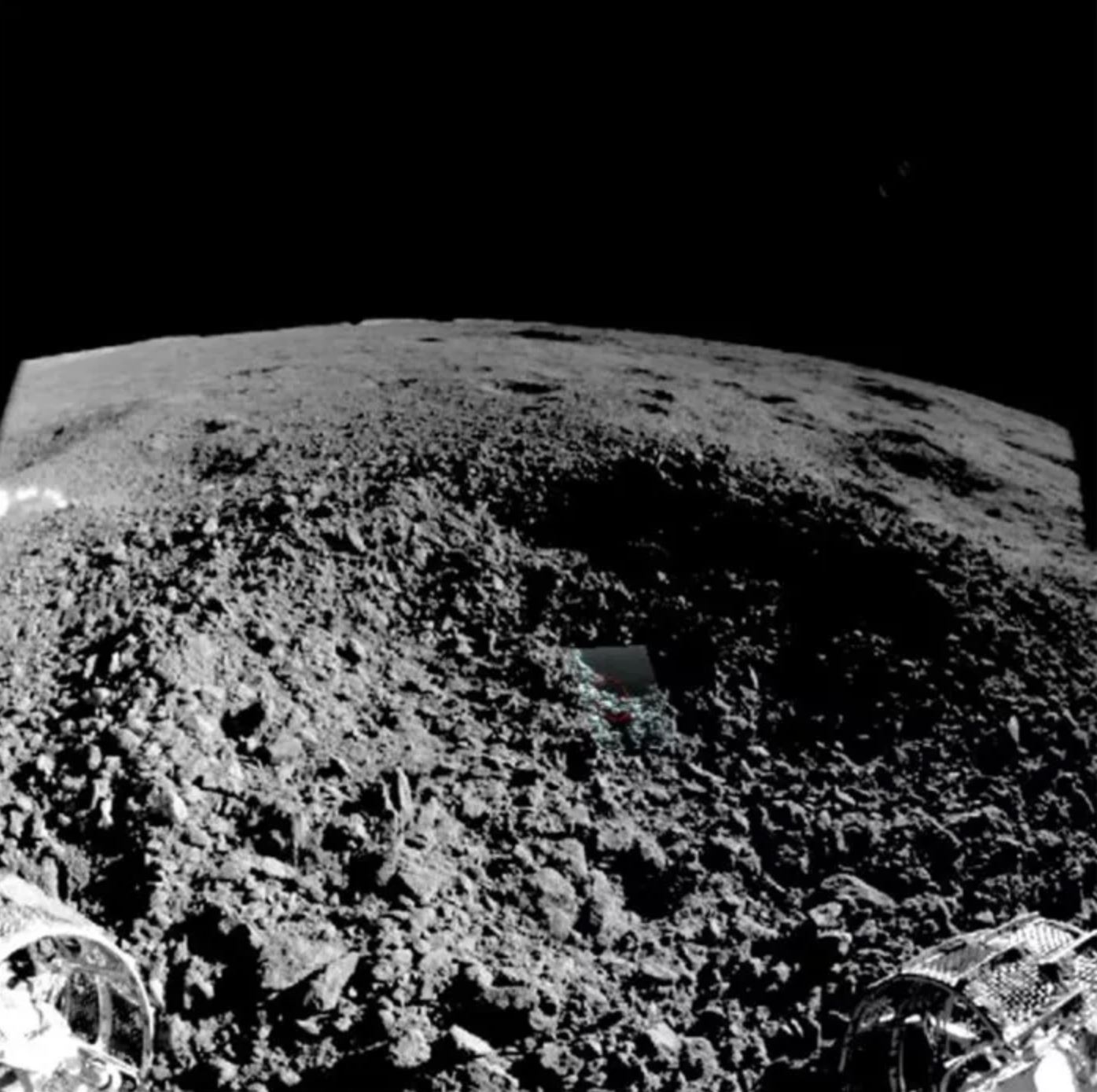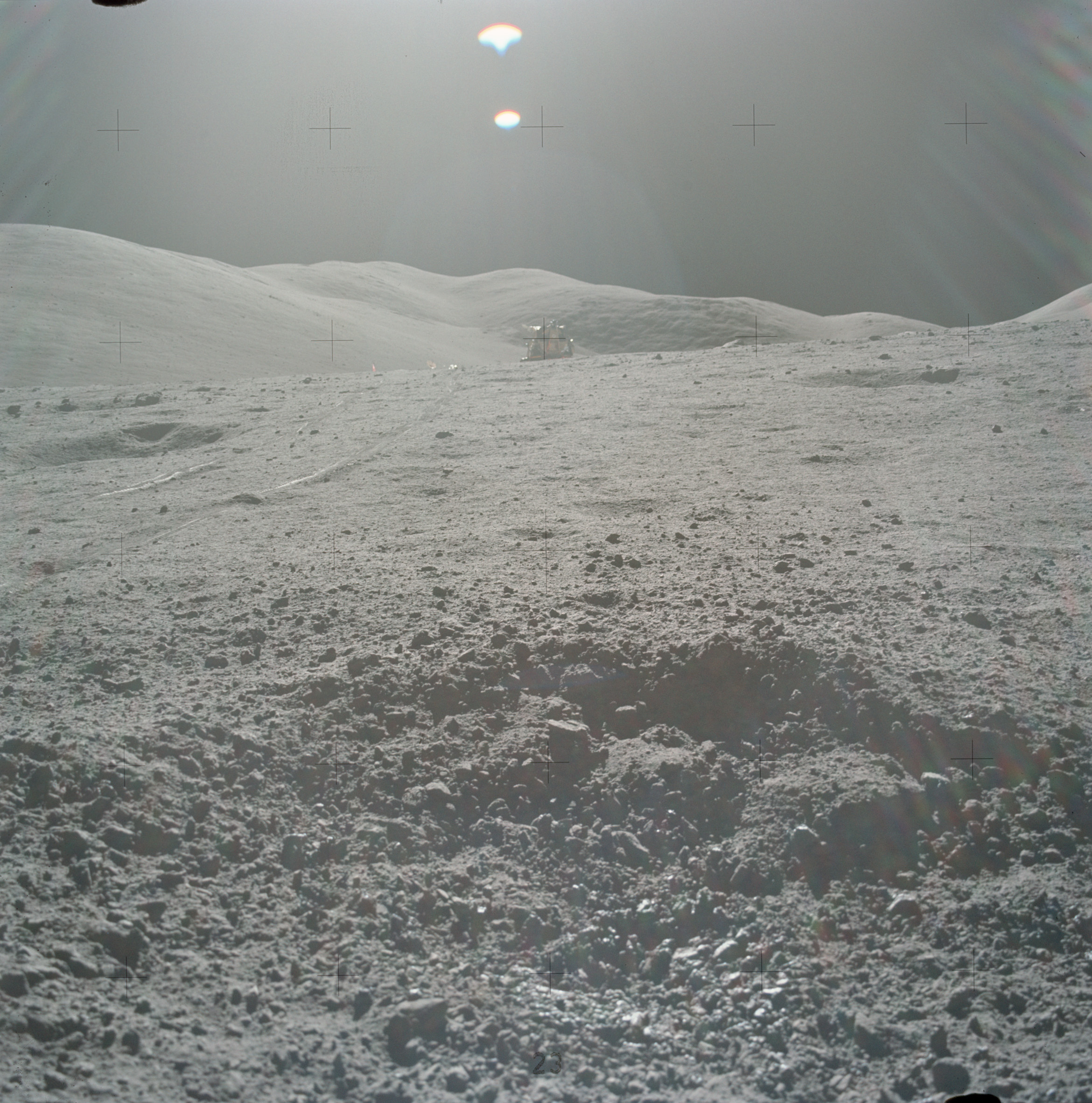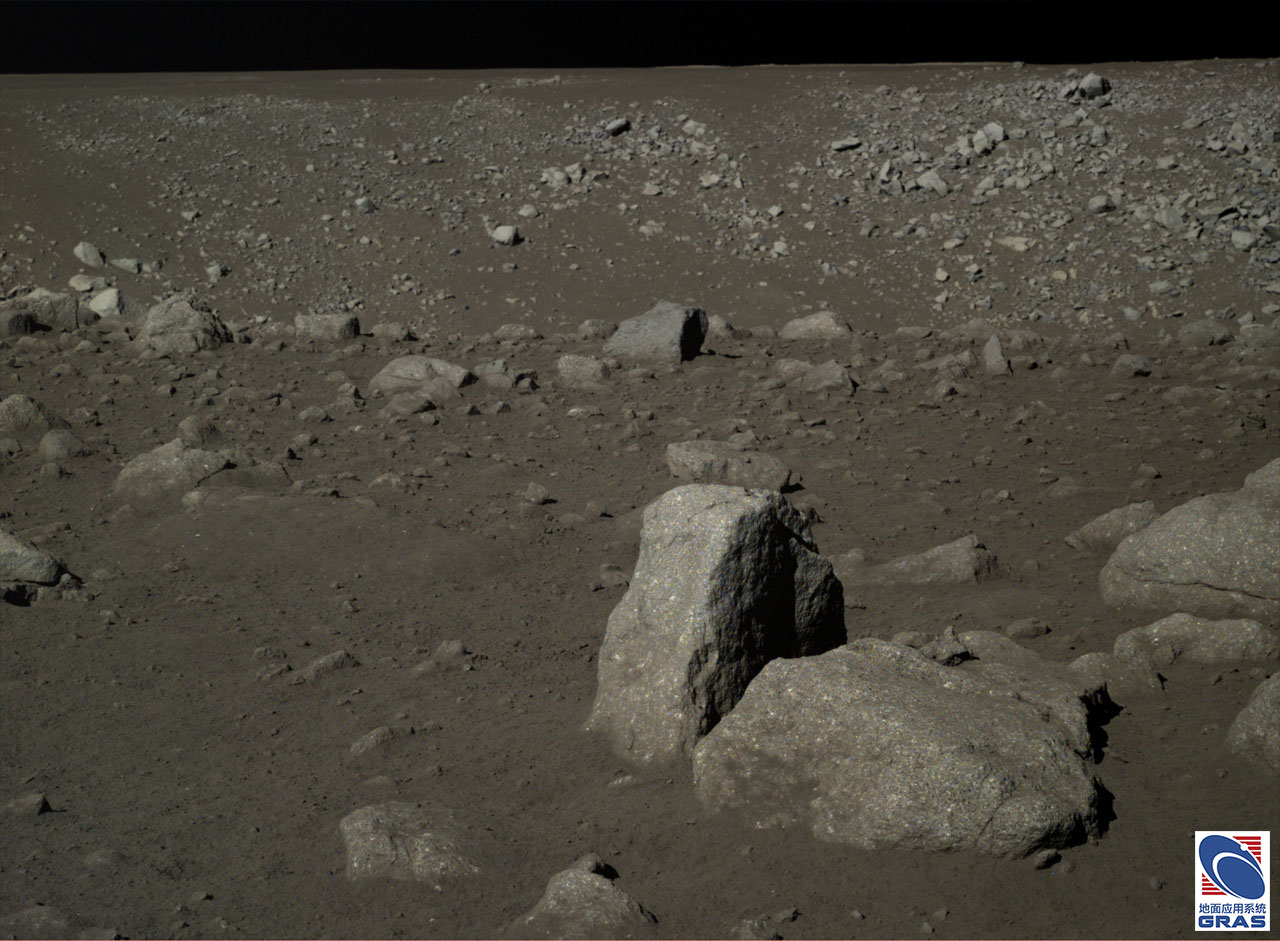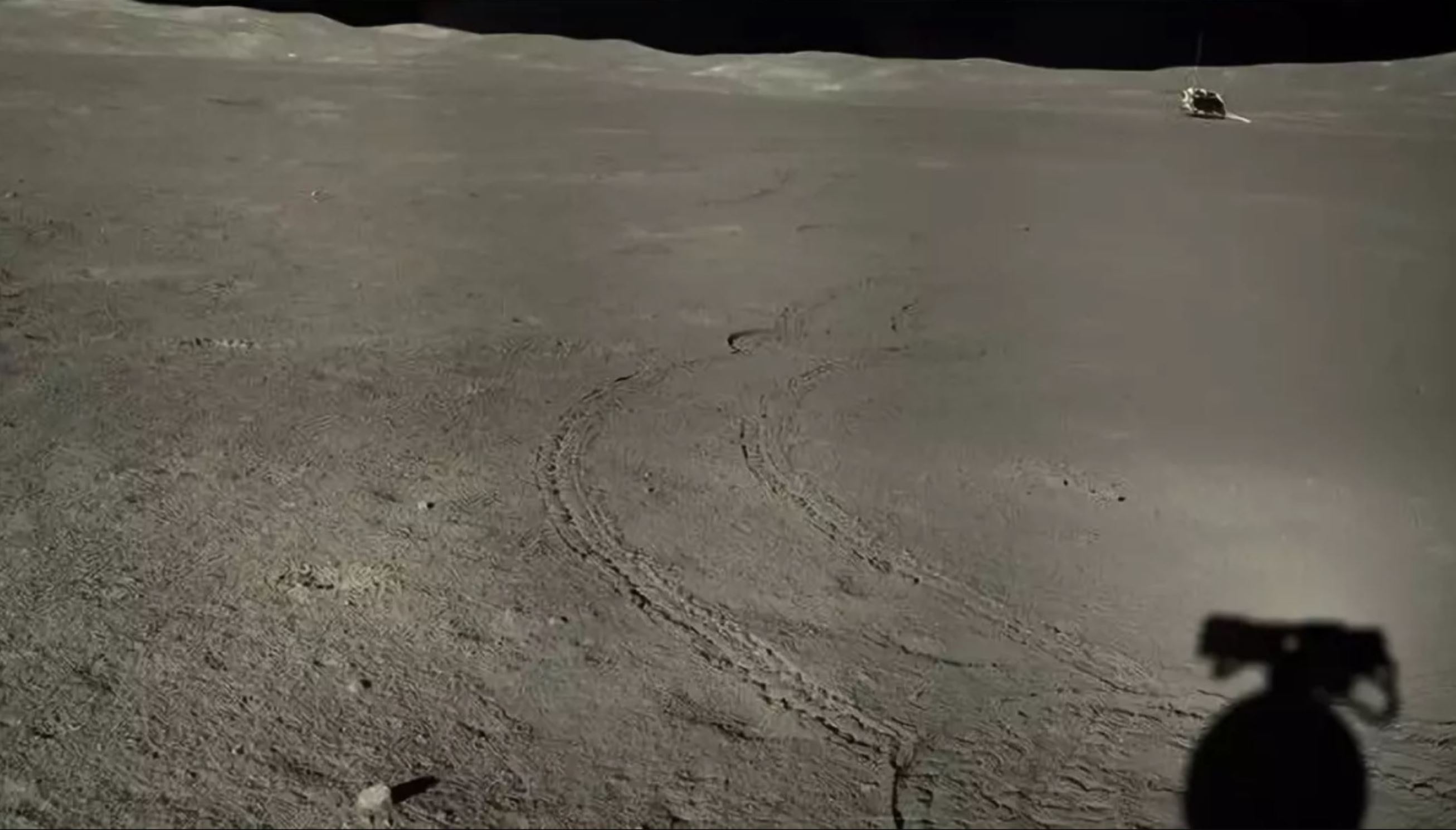China's Lunar Rover Scopes Out Weird Substance on Far Side of the Moon (Photos)
China's lunar exploration program has released images that give us a glimpse of the mysterious material discovered on the far side of the moon.
Yutu-2, the lunar rover for China's Chang'e-4 mission, grabbed attention last month after its drive team spotted something unusual while roving close to a small crater. The Chinese-language science outreach publication Our Space, which announced the findings on Aug. 17, used the term "胶状物" (jiao zhuang wu), which can be translated as "gel-like." This notion sparked wide interest and speculation among lunar scientists.
Scientists have now gotten a look at that curious material, thanks to a post (Chinese) released over the weekend by Our Space via its WeChat social media account. Along with new images of the stuff on the moon, the post details how the Yutu-2 team carefully approached the crater in order to analyze the specimen, despite risks.
Related: The Greatest Mysteries of the Moon
The clearest image shows two of the rover's six wheels and the contents of an approximately 7-foot-wide (2 meters) crater.
The compressed, black-and-white shot comes from an obstacle-avoidance camera on the rover. The green, rectangular area and red circle within are suspected to be related to the field of view of the Visible and Near-Infrared Spectrometer (VNIS) instrument, rather than the subject matter itself, according to some lunar scientists.
VNIS is one of Yutu-2's four science payloads. It detects light that is scattered or reflected off materials to reveal their chemical makeup. As VNIS has a small field of view, the drive team needed to carefully navigate Yutu-2 to make a detection without falling into the crater.
Breaking space news, the latest updates on rocket launches, skywatching events and more!
After obtaining the first set of data that VIRS collected at the crater in July, the Yutu-2 team deemed it to be unsatisfactory due to shadows, so the team members attempted a second approach and measurement during the following lunar day in August. According to Our Space, a satisfactory detection was made — but the results were not released.
Clive Neal, a lunar scientist at the University of Notre Dame, told Space.com that while the image is not great, it may still give clues to the nature of the material.
Neal said that the material highlighted in the center of the crater resembles a sample of impact glass found during the Apollo 17 mission in 1972. Sample 70019 was collected by astronaut Harrison Schmitt, a trained geologist, from a fresh crater 10 feet (3 meters) in diameter, similar to that approached by Yutu-2.
Neal describes 70019 as being made of dark, coherent microbreccia — broken fragments of minerals cemented together — and black, shiny glass. "I think we have an example here of what Yutu-2 saw," Neal said.
High-speed impacts on the lunar surface melt and redistribute rock across the craters they make and can create glassy, igneous rocks and crystalline structures.
As for being unusual and "mysterious," as described by the initial Chinese account, "having craters looking like those from Yutu-2 and where 70019 was collected is to be expected," Neal said.
The initial observation that commanded the attention of the drive team was made from an image from Yutu-2's Panoramic Camera (PCAM). The Chang'e-3 mission's Yutu rover, which landed on the near side in 2013, returned impressive, high-resolution color images of the lunar landscape using its PCAM
The Yutu-2 team will have great images to work with, and these may suggest something different. However, images from the Chang'e-4 mission might be released publicly as long as one year after they have been taken.
Dan Moriarty, NASA Postdoctoral Program Fellow at the Goddard Space Flight Center in Greenbelt, Maryland, agrees that it is hard to make a definitive assessment of the substance's chemical composition, given the poor image quality and overlying colored section in the Yutu-2 image.
Moriarty told Space.com that the outlined material appears somewhat brighter than surrounding materials, though the actual brightness is hard to confirm from the photographs. If so, the contrast could be due to the differing origins of the respective materials.
"Chang'e-4 landed in a mare basalt-filled crater, which is typically dark," Moriarty said. "Highlands crustal materials are typically brighter, so that would be a potential candidate."
"It will be very interesting to see what the spectrometer sees, and if any higher-resolution images become available," Moriarty notes.
Chang'e-3's Yutu rover carried an alpha particle X-ray spectrometer for analyzing chemical composition, mounted on a robotic arm, which would be very useful for identifying such specimens. Yutu-2 instead carries the new Advanced Small Analyzer for Neutrals (ASAN), a payload from Sweden for studying how solar winds interact with the lunar surface.
The Chang'e-4 lander and Yutu-2 completed the ninth lunar day of their mission on Sept. 5, powering down around 24 hours ahead of local sunset. Lunar day 10 will begin around Sept. 22 for Yutu-2 and Sept. 23 for the lander. (On the moon, a day lasts about two weeks.)
Yutu-2 has been heading west of the Chang'e-4 landing site in the Von Kármán crater since the historic Jan. 2 lunar far side landing, covering 934 feet (285 meters) so far.
- Photos from the Moon's Far Side! China's Chang'e 4 Lunar Landing in Pictures
- Mysteries of the Moon: What We Still Don't Know After Apollo
- Chinese Probe Uncovers New Mystery on the Dark Side of the Moon
Follow Andrew Jones at @AJ_FI. Follow us on Twitter @Spacedotcom and on Facebook.

Andrew is a freelance space journalist with a focus on reporting on China's rapidly growing space sector. He began writing for Space.com in 2019 and writes for SpaceNews, IEEE Spectrum, National Geographic, Sky & Telescope, New Scientist and others. Andrew first caught the space bug when, as a youngster, he saw Voyager images of other worlds in our solar system for the first time. Away from space, Andrew enjoys trail running in the forests of Finland. You can follow him on Twitter @AJ_FI.






